If you followed my guide on how to setup a blog you should have quite a decent blog already. With decent I mean at least 10000 words. 10 blog posts. You’re already giving some value to your (non existing?) audience. Now we need visitorsssss. Lots and lotssss of them. But how do you get visitors in this crowded digital world? You grind and work and stick with it.
Install analytics software like Google Analytics or Matomo (Previously Piwik) if you haven’t yet. If you don’t know how many visitors you have now and where they’re coming from it’s harder to get more…
We’ll focus on the most interesting traffic channels in this blog post. As this is also a living document I’ll add more traffic sources as I have time. We’re going to start with my favourite: organic traffic from my good old friend Google.
All my sites combined receive millions of (free!) organic traffic per year from Google. It takes a lot of work to get in the top 10 and once you’re there work doesn’t really stop. I had a few years where my rankings stayed stable. But these days you really have to keep working on your site, keep improving or adding more content in order to keep your rankings. That’s because more and more people are creating websites and competing over results. And last but not least because Google is keeping more and more traffic themselves. How? Ever heard of the answer box?
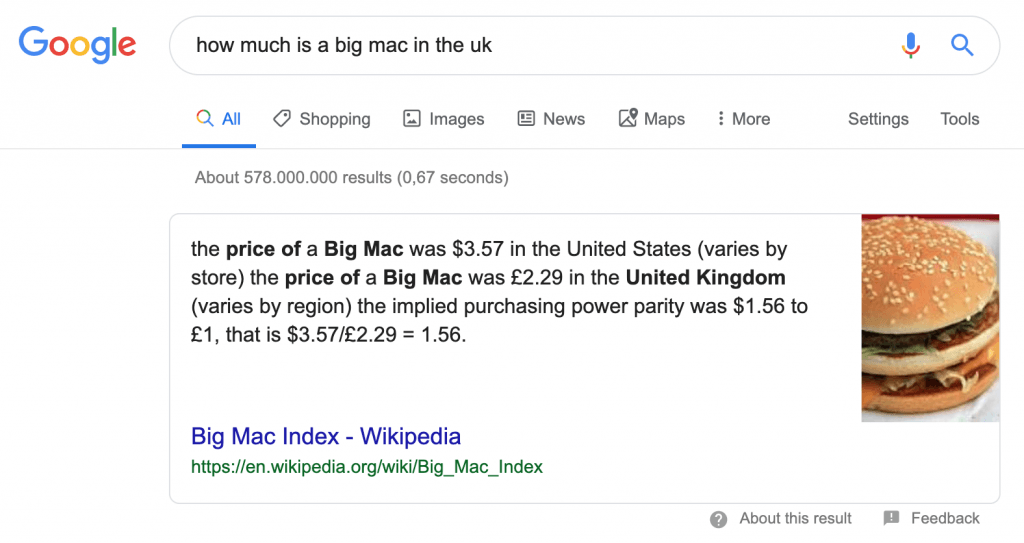
It gives you an answer to your query without having the need to clicking through to the result. This was already the case with weather queries, brand name queries, contact addresses and stuff like that. Answer box have really ramped up the last 12 – 24 months.
Before answer boxes Google’s main driver was click through rate to a result. Because the higher the CTR the better their results were. Now they’re trying to get the lowest CTR possible. Because the lower the CTR the better their answer in the answer box. Also called result #0. And a lower CTR means less traffic to you! We’ll get back to this Answer box thing in a bit.
Table of Contents
Getting more visitors from organic search
You need 3 things in order to rank organically.
- A technically sound website
- Content (value)
- Authority (links)
How to get a technically sound website
Install WordPress and you’re done. 😉 Well not really. But installing (any) up to date open source CMS will give you a great basis to start with. Back in the days you had a lot of Javascript and Flash. Google couldn’t really figure out what was on the page. He couldn’t “see” what was on it. These days the hardest thing to get working is AJAX based Javascript frameworks like AngularJS, React and vue.js. I might write a blog about that someday but for now I’ll just focus on WordPress because it’s the most widely used CMS in world.
I’ll walk you through what you can change in WordPress in order to get your website in tip top shape.
Add readable permalinks
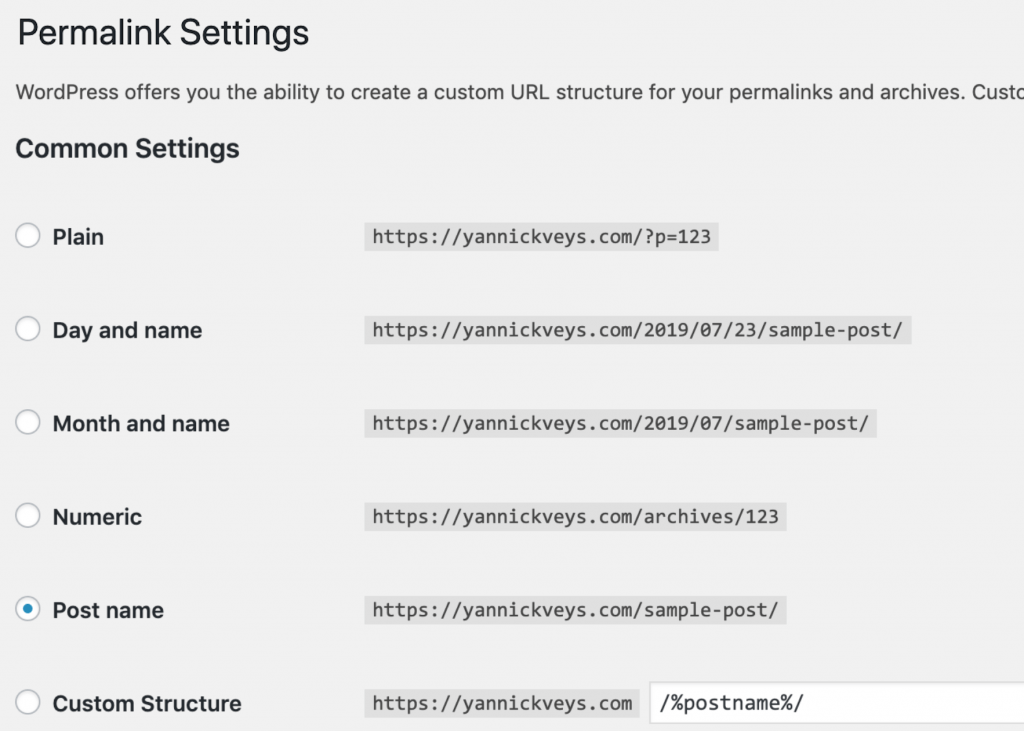
WordPress by default uses the “plain” setting. Which gives you ID’s for your urls. That’s not really user and search engine friendly. So change that to “Post name”. You can change every permalink from every post or page. Avoid too long url’s. So if you have a very long title, change the permalink a bit so it’s under 50 characters.
Add an AMP plugin
I also mention this in my post about starting a blog. AMP = Advanced Mobile Pages. It’s a light weight version of your website designed specifically for mobile phone users. AMP is currently even expanding so desktop users can also take advantage of the light weight structure.
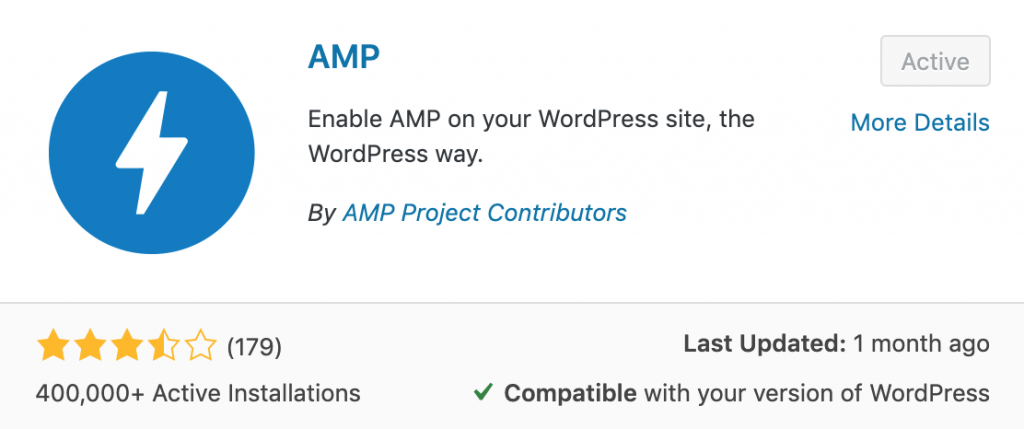
Add and SEO plugin
I think Yoast SEO plugin is good. It used to be better. It’s getting heavier and heavier. Costing valuable load time for my visitors. But I haven’t found a good one to replace it yet.
You need a plugin like this for at least one reason: so you can add description tags for every page or post.
The description tag is the black text you see under the blue (blue) title on the search engine result pages (SERP’s)

Add a caching plugin
I use W3 total cache.
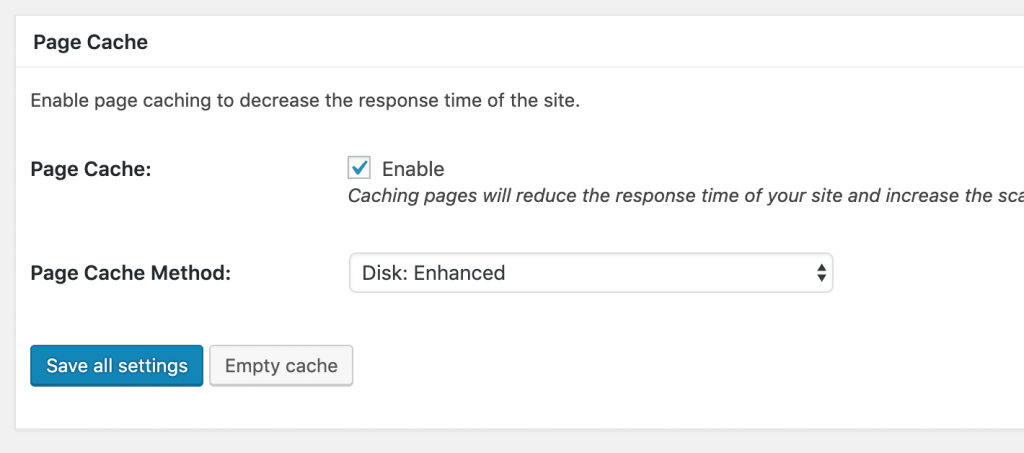

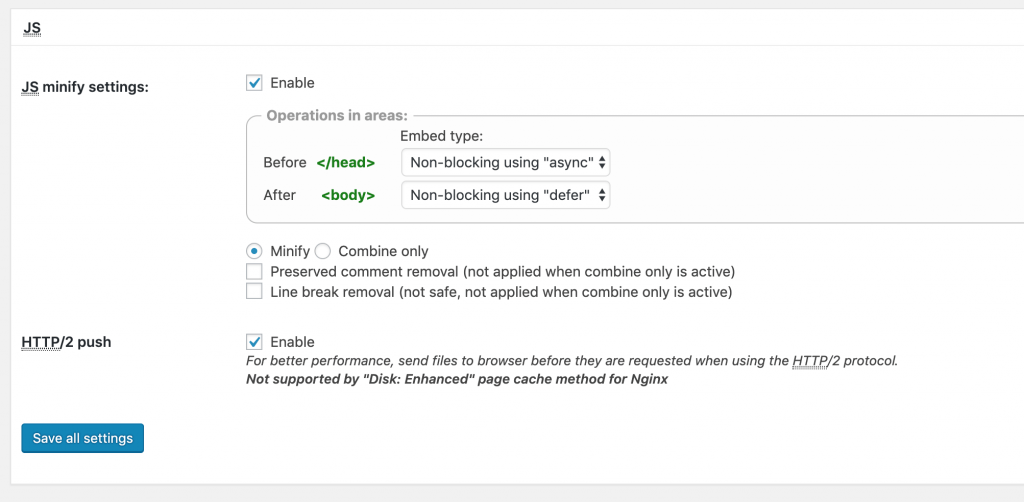
When you enabled the above settings that should save you quite a bit of load time. If you website doesn’t work anymore, change the last setting, the Non blocking using defer for javascript after the <body> tag to async or even blocking. That should fix your blog again. If it still doesn’t work set both of them to blocking. Make sure you purge the cache when you change settings otherwise they might not be viewable immediately.
If you install these few plugins and follow the permalink example, you’ll have a blog that’s above par for what’s considered a technically sound website. The only thing you need to do is to add an SSL Certificate to your website. This really depends on what type of hosting you have. At some hosts you pay nothing extra for an SSL certificate like at Bluehost. At others you pay anywhere from 10 to 100 bucks a year for one.
Improving your blog content to get more visitors
1000 words and 10 pages is the absolute minimum before you can start moving the needle. I say that in a general sense. I have website which contain less than 1000 words and they still rank top 3 in Google. These are really narrow niches with very low competition. usually you need to do some more work to rank high.
If you look at content from an SEO (Search Engine Optimization) standpoint it’s pure a means to an end. You need good content so you can reach out to others to link to you and for others to link out organically because they just think you have great content. The number and quality of links is what really determines how high you rank and how many visitors you can get from search engines.
Before we dig deeper in the content part of this post, I want to show you some ways to find out how much value you need to deliver before you’ll start ranking in Google.
In my opinion it has to do with only 2 things. The way the SERP (Search Engine Result Page) is built and how many others are focussing on the same keywords / user intent.
I’ll show you 2 examples of SERP’s that are totally different and thus also totally different in how you can rank on them.
#1 (with local intent)
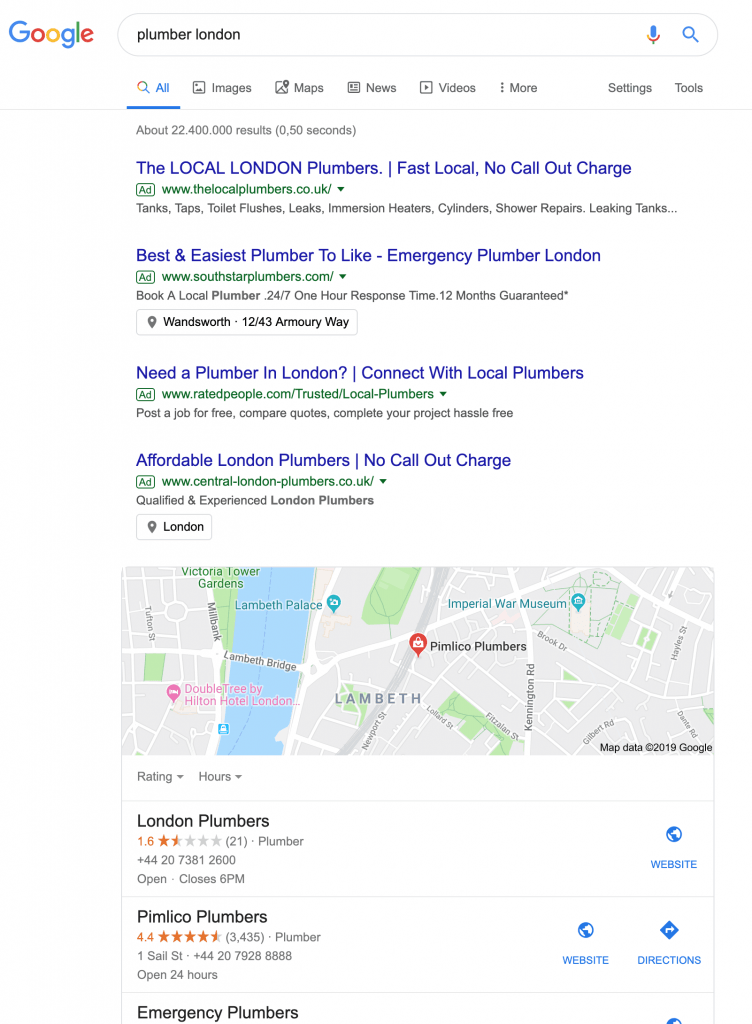
#2 Orientation intent
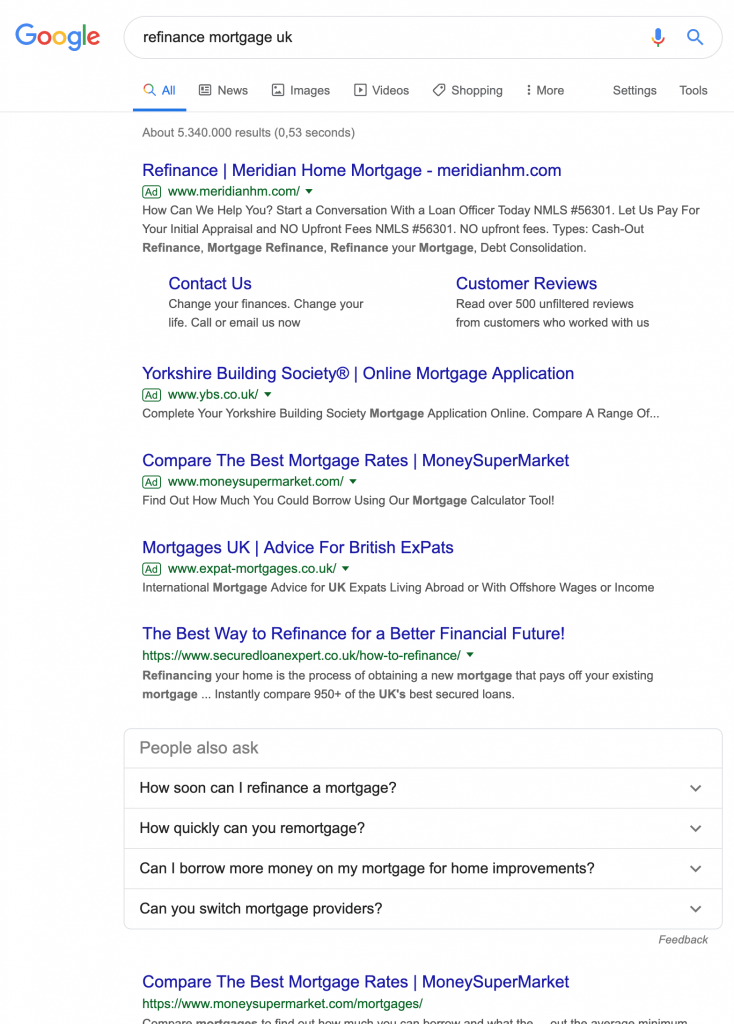
In #1 you see a Google Maps section. In #2 you see a “People also ask” box.
So based on your niche on your blog you’ll have to figure out on what type of queries / user intent you want to rank.
Go back to your blog now and go through at least 10 of your pages. Write down 10 keywords per page where you’d like to rank on.
Goto wincher.com and register for a free account to start tracking your rankings in Google. The trial ends in 14 days so if you don’t want to pay, cancel the account. After the trial is over it’s just 6 Euro’s (or equivalent in your currency) to keep track of a 100 keywords. I think that’s pretty good value. What’s also nice is that you can add competitors to your account and that you can see who ranks on what terms (even without adding competitors).
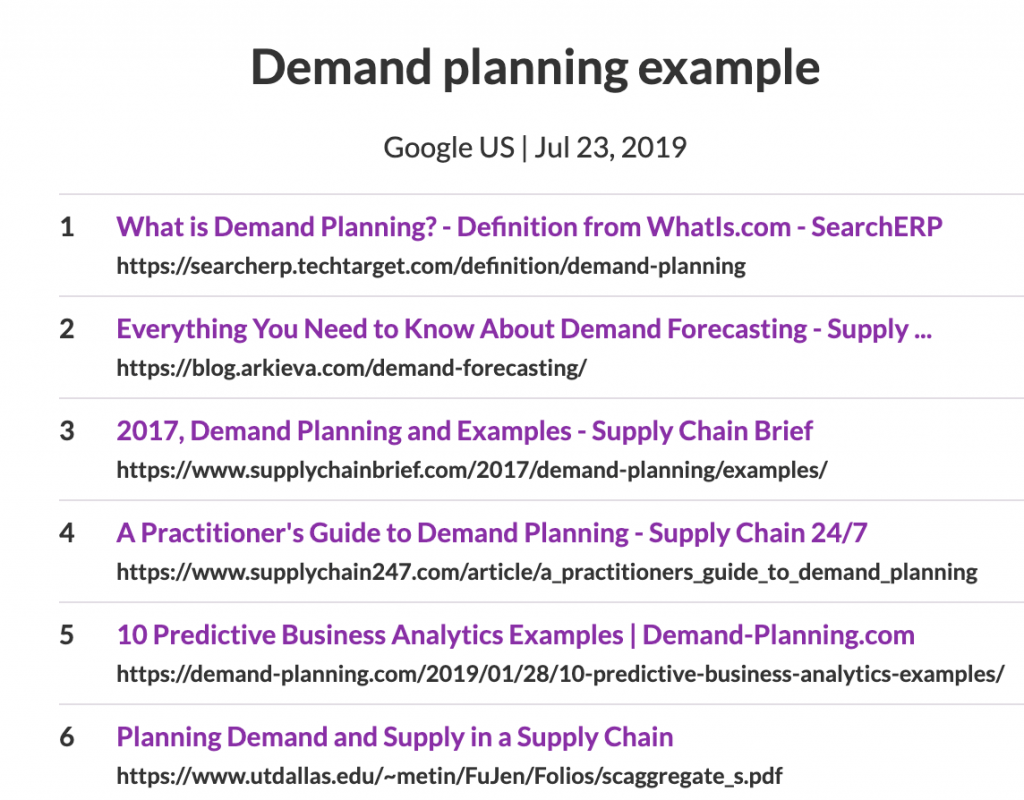
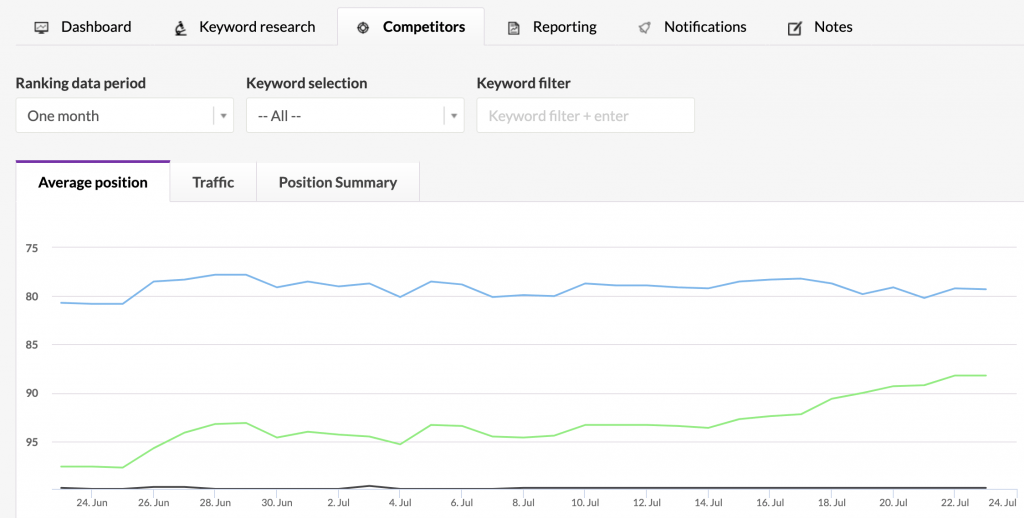
So… Enter all the keywords you want to track. You could also add groups to them. Making the tracking of similar keywords easier. 90% of the rankings should be immediately visible. So after a couple of minutes you should already have an overview of where your ranking.
Ranking 100+ everywhere? Type this in the google search box:
site:yoursite.com
yoursite.com is of course your domain name… 🙂
When you’re not ranking for anything in Google
0 results? That means you are not being indexed by Google. If you have a really new website or really low “value” as in almost no content, Google can choose not to index you.
If you do have a lot of content on your site it could mean 2 things. No one is linking out to your blog or you got a Google penalty.
The best way to find out is to install Google Search Console.
Verify your domain. There are many ways. If you’re only working with one domain, as in yoursite.com you can use the right option and even verify your domain via Google Analytics if you installed it before. Other methods include DNS verification or by adding an HTML file to your hosting environment.
Once you’ve verified your account you need to wait a bit… Once Google has done its thing you can view your data. Start at “Coverage”. if there’s nothing in the “Valid” column Google hasn’t indexed you yet. If there are only urls in the “excluded” view than check that you didn’t accidentally put your blog on nofollow. It’s easy to change, just untick this box and save.
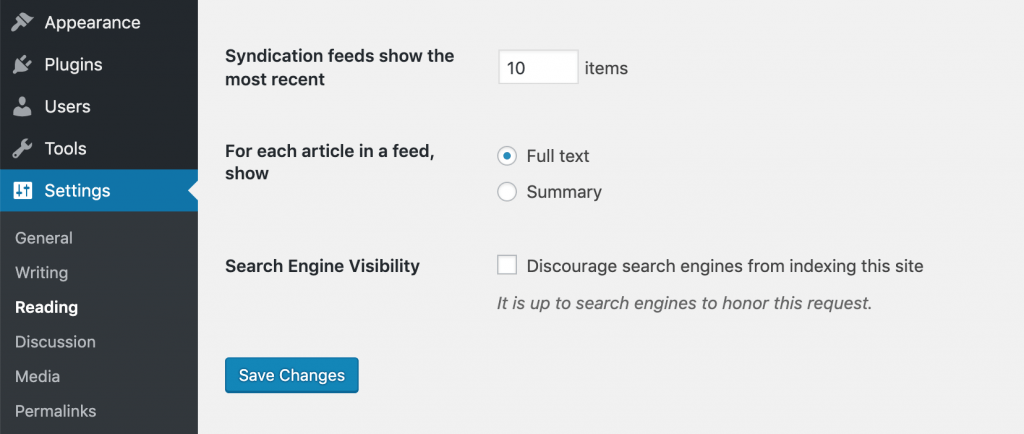
Also check the “Security issues and manual actions” tab in the Search console. If this is lighting up you have a problem. I’ll go into detail about this one at a later stage.
Besides the last thing I mentioned… If you have not been indexed in a few days than probably no one is linking to you. At the time of writing no one is actually linking out to this blog. I’m doing a challenge where I write 100000 words (yes, one hundred thousand words) in 30 days and see what happens. The funny thing is that I’m almost 100% sure that nothing will happen. I will have received no traffic, nothing at all. Even though the content on this blog is pretty ok 😉 The only problem is: I built a house on an island nobody knows about. It’s a great house. it’s actually a villa with a pool. Something you’d love to visit. But I forgot to mention this to anyone.
It’s the same with search engines. If you don’t tell Google that you’re “alive” no one will come. What’s the easiest way to get your site indexed? Ask a friend to link out. Register an account at Quora and add your link to your profile. Stuff like that. Only once your website is discovered through a link on someone else’s website will Google “see” you and start crawling you.
When you’re ranking in Google but not getting any traffic
If you’re ranking in Google that means you’ve been indexed. There’s no strange stuff going on with “noindex”. Meaning: you’re telling search engines somewhere, either in the head of your pages or in a robots.txt file, not to index your pages.
If you just started your blog: welcome to the real world.
If you build it they will come, doesn’t apply to new websites. You have to fight your way to the top. It’s going to be a long ride. Get ready, cuz I’m gonna help you!
We talked about value before. If you don’t have any valuable content on your blog, nobody will come. Ever. Period. So we’re first going to do some research when it’s likely you’re gonna rank for something and where it’s best to focus your efforts on. Because one thing IS important: you want results fast. You don’t want to wait for months before the first visitors start dripping in.
This is how you do SEO research to focus your efforts and gain more visitors quicker
First we’re going to talk about the FREE research. Anyone can do this. It just takes a little more time, but it doesn’t cost any money! Just follow this step by step guide.
Remember you started tracking your rankings earlier in this blog? Go back to your rank tracking dashboard en look at your rankings. Are they all 100+? Or are some keywords ranking?
All my keywords are outside the top 100, how do I rank them?
If you have none in Google’s top 100, I suggest you first add some more keywords. Use google autocomplete. Just start typing and Google should give you the most sought queries automagically.

You can also type a keyword and then just add an a then remove the a and add a b and so on and so fort. It’s basically the same thing this Google Spreadsheet does. Type in a few keywords and see what variations people are searching for.
Next up is the “Related searches” step. Scroll down to the bottom of the page. You should get a related searches box. See if any of those keywords are something you could or are targeting.
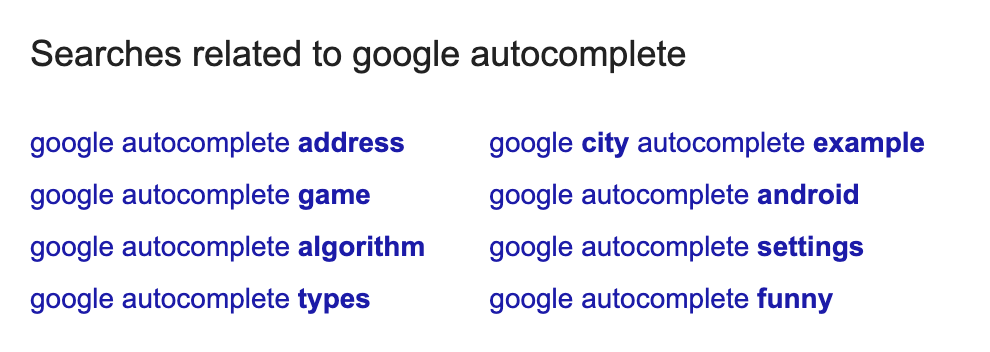
Net up is the “People also ask box”. This has not been around for a long time yet. You should be seeing at a lot of queries though. Especially broad / question based queries.
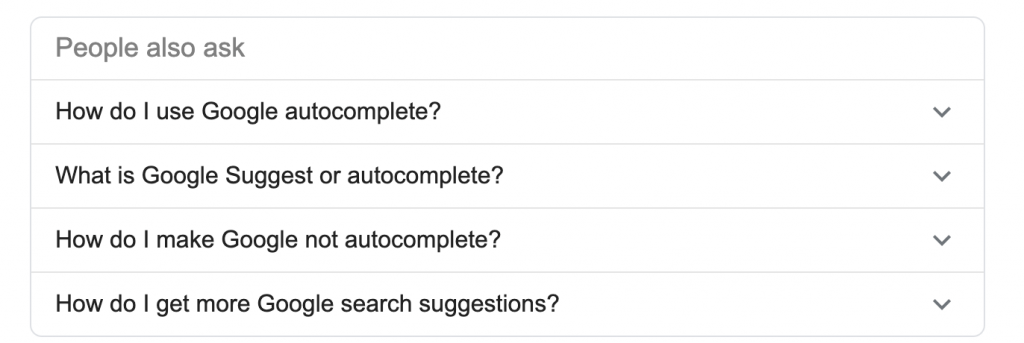
You’ll find a lot of how do i, what is, how to, etc type of questions.
Try a lot of different phrases. For the autocomplete (or in the Google Spreadsheet), the related queries and the people also ask box.
Don’t go over this lightly. This will keep you busy for a couple of hours at least.
When you’re done with this you should have a list of hundreds of keywords / phrases. There should be keywords that you could rank on right now. There should also be a lot of keywords you can use in the (near) future.
The longer the query (as in the search terms) the less searches are performed on the query but the more likely you’ll rank on those words. That’s what people call the head and long tail of search. The head has the most volume. As in “shoe”. But it’s extremely hard to rank for the term shoe. It’s a lot easier to rank for the term “dark blue leather mens shoe with rubber sole”. Now the amount of people that are searching for that query will be low. Pretty darn low. But you will be able to get good rankings on that keyword phrase much quicker.
When you’re done with this exercise you should have 100 keywords in the rank checker. If you’re still not ranking on any of them I think you’re still aiming for too competitive keywords or you have just a few lousy links pointing to your domain. If you’re sure it’s the latter, continue with the next step. If you’re not, keep digging.
Looking at the competitive search landscape
There are a few basics methods of gauging the amount of competition on one keyword. You can use both the Google Keyword Planner we used earlier and a few more queries on Google which I’ll show you first.
If you want to know how many other webpages are ranking for a keywords you can just Google it.
For the keywords “shoe” there are approximately 2,7 BILLION web pages.

Now that’s a lot. There are about 7,5 billion people on this planet. But 2,7 billion pages about shoes. Wow. Huge. OK. So you immediately get the feeling that this is a pretty competitive market right?
Let’s dig a little deeper. if you Google: intitle:shoe you’ll see how many web pages have the word shoe in their title. Having a keywords in your title is like the most basic form of doing SEO. If you don’t have it in your title chances are not very high you’ll rank for the keyword.
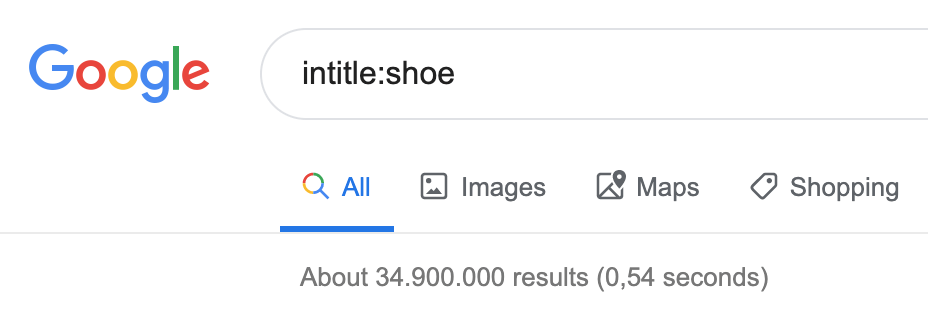
35 millions pages have the word shoe in their title. That’s nothing compared to 2,7 billion! 🙂
But if we really think about this… Do you google running shoe or running shoes. Probably the latter. And everyone who calls him/her self just a little bit of an SEO expert knows this. So I did the search again:

362 million. OK. So still a lot. But less than 15% of the original query size.
You can do this type of research for your own keywords. I want you to do it for at least 50. While you’re at it you get an extra assignment (yes, just like in school…).
Every query you do you also have to look at the entire results page. Click on every result that’s on the first page. Write down what you see. Stuff you didn’t know. Stuff you’re missing. Stuff other websites are doing great and you need to do at least as well as they are. Because if you want to rank top 10 you have to at least have a better page than the ones ranking top 10 now. Just as good isn’t good enough. Think about how you can 10x your page.
The founders of AirBnB had a great way of doing this exercise. They told themselves: what does a host have to do to get a 1 star review. Don’t open the door. For a 2 star review? Open the door to a dirty apartment. 3 stars? Open the door and have a clean but not really cozy place. 4? Open the door, have a clean and cozy apartment and have some wine waiting for you to open. Now for the 5 stars: Open, clean, cozy, wine and the host would give you insider tips on what to visit with your girlfriend (because you mentioned you’d visit with her.
Now for the interesting bit… They wouldn’t stop at 5 stars. They’d ask themselves how can we deserve 6, 7, 8, 9, 10 stars. Thats the same thing you need to do. In the end, the best content will come on top. But you first need the best content. So for AirBnB they had stuff like: have a band play for you. Have your favourite actor pick you up at the apartment. Take a spaceship to the apartment. They had all crazy ideas. The point of the exercise was that you could make it as crazy as possible and try to figure out what you COULD do to get 6 or more stars. What IS possible? What’s not been done out there? Thats probably the most important task you have right now.
What rank do I need to get in order to get traffic from search engines?
First result page is really what you’re aiming for. Page 2 and beyond get like 2% – 3% of clicks.
This is a nice overview of CTR vs position.

Top 3 get most clicks. Depending on what device you’re on the top 3 gets between 45% (mobile) and 55% (desktop) of all clicks. On really high volume keywords you’ll also be happy with a position between 11 and 20. Also being near the top will get you some impressions on longer tail keywords, variations and the occasional testing Google does to check which result is still the most relevant for a certain keyword.
What types of content can I add to rank higher?
- Blog posts
- Lists
- Tables
- Answers to questions
- Images / Infographics
- Video
- Tools
- Downloads
- Podcasts / Interviews
Blog posts
That’s basically what you’re reading now. You can choose shorter more news like posts or longer (like this) in depth articles. For this blog specifically I chose long format posts. It’s a well known fact that you rank higher if you write longer content pieces. The only thing which is still at debate is whether you rank higher because Google thinks you’re more relevant for certain keywords. Or you rank higher because your post is being shared more, linked to, talked about. Probably at least a bit of both. But in the end the more value you provide your users the higher you will rank.
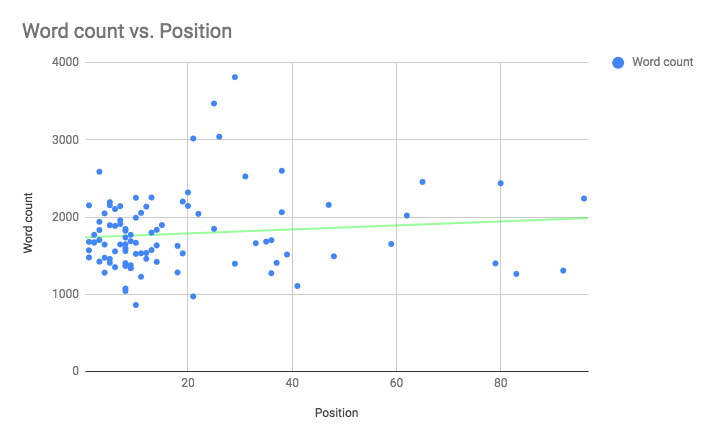
There’s not enough correlation between word count and ranking in this case. But another case from Backlinko’s study found that on average content that ranks in the top 10 has about 2000 words.
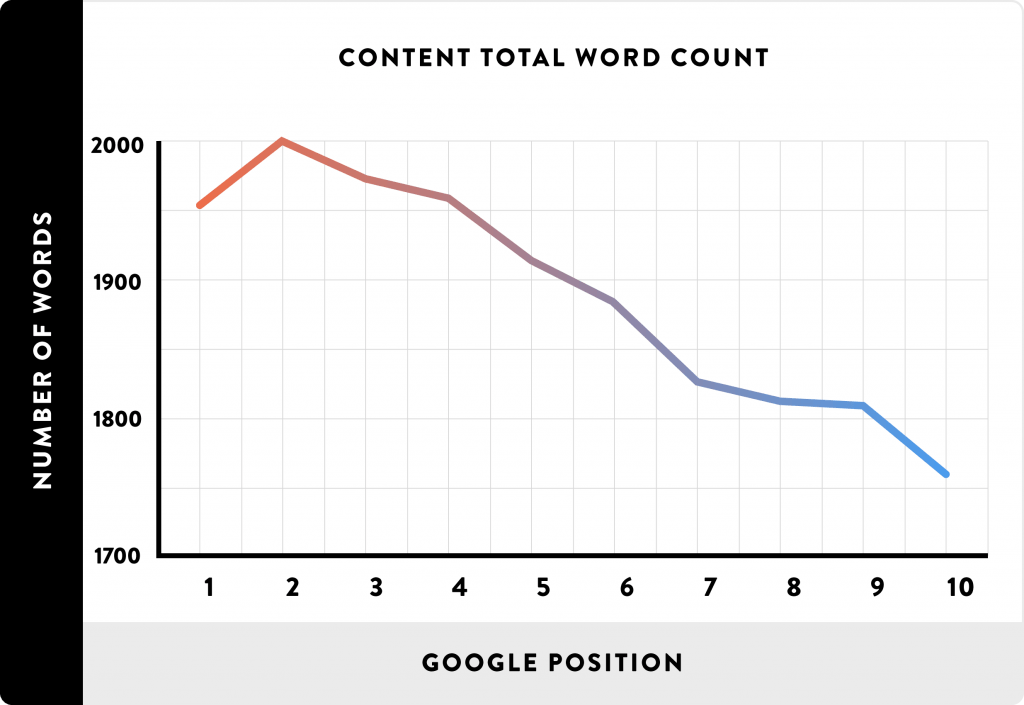
Lists, tables and answers
If you’ve read the entire post so far you’ll have read about Google’s Answer Box. Position number 0 on the SERP. Probably the most sought after result even though every SEO marketer would rather have it removed. Because users don’t click through as much to their websites as they once did. But, we have to live with it. So it’s best to try and have our result in the Answer Box.
You have a chance of ranking in the answer box if you are in the top 10. Any lower? You won’t have a chance. So if you just started out with your blog, chances are nil that you’ll make it up there. BUT you want to prepare for the big day that you do make a shot at it. It makes good practice.
- People
- Love
- Lists
It’s easy to ready. Gives a lot of information in a small amount of time. So that’s why Google is also displaying list in the Answer box.
You have small and big lists.
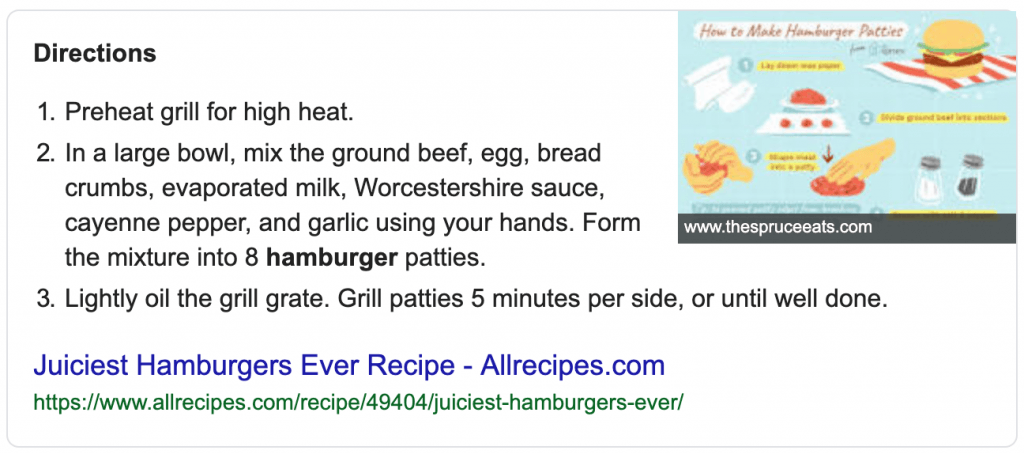
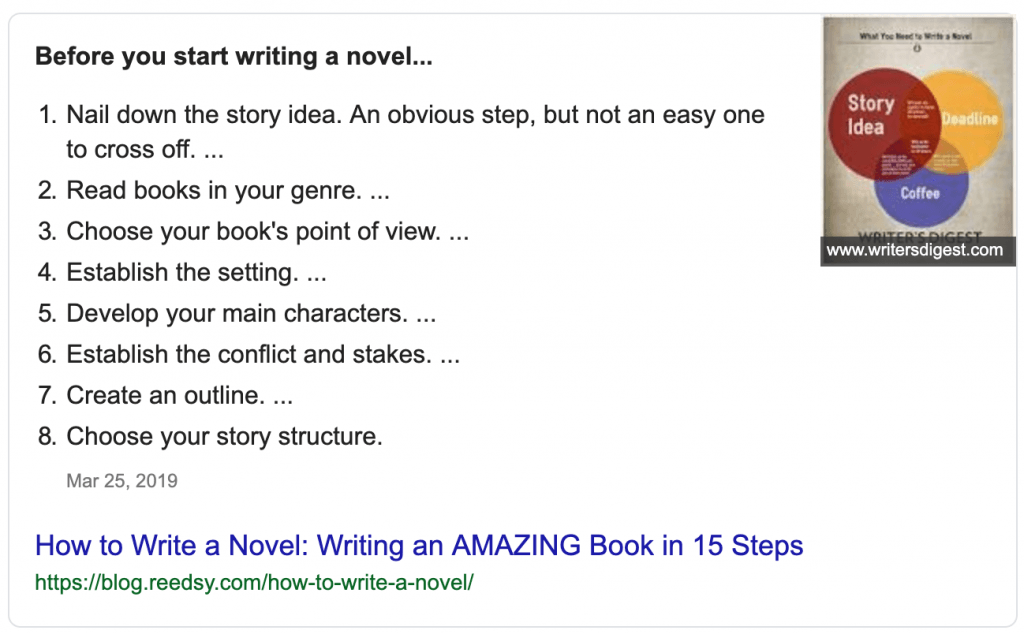
Lists combined with answers / copy.
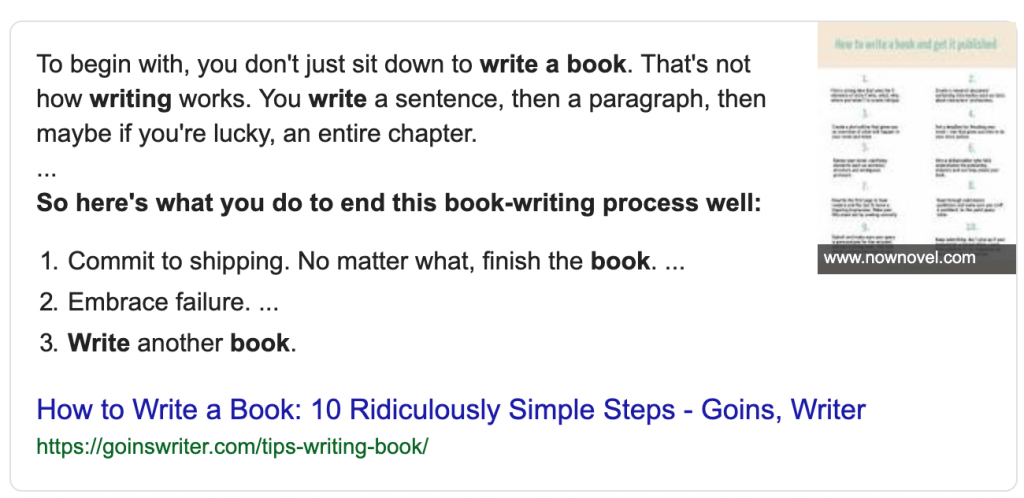
These days you also have answers in video format. Google knows what result from YouTube is the most popular. They also know what type of result is most clicked on in the SERP. So if video’s are most clicked than video is what they’re serving in the answer box.
They don’t send you to YouTube. You can directly watch the video here. On Google’s real estate. With less chance for you to gain followers, have people watch other video’s or click through to your website or comment on your video.
My guess is that comments and following channels will eventually end up in the SERPs. I think Google is trying to make its search engine more social in stead of building a new social platform like Google+ which failed miserably.
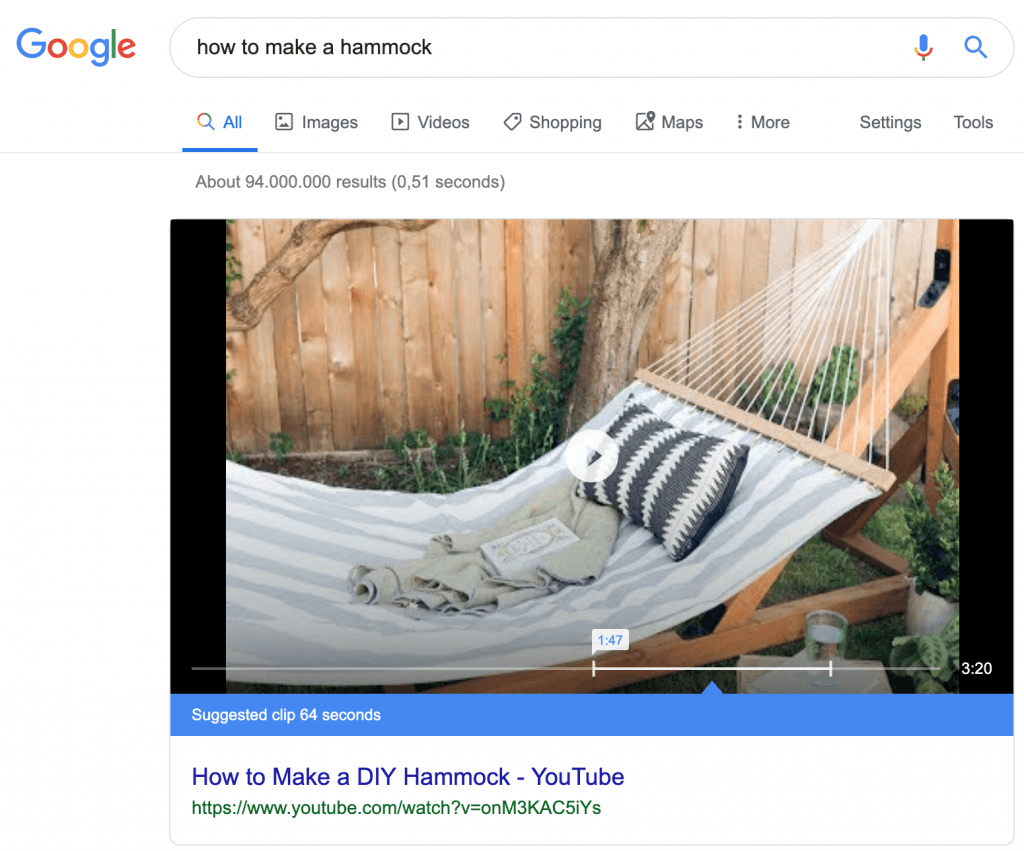
In order to get an answer box result you have to use 2 things. Headings. As in H1, H2 or H3’s and answers in the form of lists (<ul> or <ol>, tables, or content that answers the question you’re asking in the header.
Another content improvement: use images / infographics
Just using a single infographic on a page would not improve your rankings. But the effect of a great image or infographic can be fantastic. They are a big link magnet. People love images because it still says more than a 1000 words.
Smart marketers show an “embed this” graphic box below the image with some html code you can easily copy. Decrease the workload for (lazy) marketers/bloggers, increase the chance of landing links.

If you don’t know any HTML than use this as example:
<a href="the url to the blog post you have the image/infographic on including http (just copy from your browser"><img src="the exact url to where the image is located. click on an image in the WordPress editor and click the pencil to find out what the url is" alt="What am I seeing on this image?"></a>
This would be the result for a random image (my head :P):
<a href="https://yannickveys.com"><img src="https://i0.wp.com/yannickveys.com/wp-content/uploads/2019/07/Yannick_Veys_2018_small.jpg" alt="Yannick Veys"></a>
Another ranking factor that correlates with image use is the fact that pages without images tend to rank lower than the ones without. So when you’re writing content always include images. I’ don’t know how far I am with this post, probably half way (with 4000 words!) but I’ve already included at least 20 images.
Improve your content even more with video
Right now probably the number one way of getting more engagement on your website. Getting more eyeballs on your blog is video. I haven’t made a single one yet for this one. (Concentrating on words first :)) But I’m sure to start my own YouTube channel and upload videos.
Back in the days (couple of years ago) it was fine to also use Wistia or Vimeo as a video services because those videos would also rank in the search results when you embedded them on your pages. But right now the amount of Youtube videos that rank on Google is just massive. I don’t think I’ve seen any other lately.
So. If you want to rank in the video results these days YouTube is your friend.
Did you know YouTube is the second largest Search Engine in the world?
There’s a whole strategy when it comes to YouTube. For now it enough to know that it doesn’t matter what kind of niche you choose, video can always be used. If you’re not comfortable in front of the camera, you can always do screen recordings and let your voice do the talking.
I wouldn’t worry too much by the way. Since Facebook introduced Facebook Live videos, people are used to low cost no decor videos without a script. That’s actually the great thing about it. Normal people talking to you by video.
The only downside is that Google is “stealing” your eyeballs because it’s showing your video in the answer box and it directly links to YouTube. So if you upload private videos and only embed them on your website, you’ll still be sending traffic to YouTube in stead of your own website. This used to be different. Problem is: if you don’t do it, others will. So you just have to follow in line and be a good boy.
The upside is that your web pages will rank higher with video. You deliver more value to your audience. You increase the engagement your audience has with your blog. Video is just an incredible medium to tell your story and to explain things to other people.
Tools can be used as another great improvement to your blog
What do you mean with tools I hear you say? It can be anything really.
- Google (automated) Spreadsheets
- Interest calculator
- (Web based) Rank tracker
- Http header checker (to see what kind of redirect or what url is “behind” a url)
- Checklists (I put em under tools because in the end it’s something you created for other people to use)
Tools are something that people keep coming back to. They keep providing value. You don’t read the same blog 4 times but you can use the same tool multiple times. It’s also a link magnet because it provides more value than just plain text or images.
If you have an idea for a certain tool but you’re not technically enough to build it yourself, use a platform like Upwork to find someone who can build it for you. Upwork is a platform that has thousands of freelancers from web developers to personal assistants to people who’ll process data for you.
Posting a job for web development (a creation of a small software tool) will easily land you 50 people who want to work for you. I think you get great value for money.
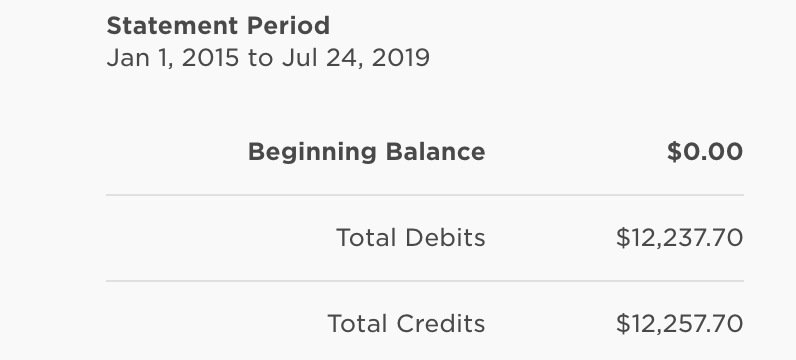
I spent quite a bit of money on Upwork in the past few years. I hired people for writing content, creating tools, doing admin work, making photographs and even building complete web applications.
The final content improvement: downloads
Whitepapers, e-books, even software. It all comes down to the same thing. Provide value and they will come (back). Most companies / blogs don’t link directly to valuable assets like the ones I just mentioned. They put it behind a newsletter subscription form or other lead generation based form. They figure: we provide real value, we want something in return. I’ll write a new blog post about how to do email marketing. This will be one of the subjects I’ll cover.
If you do directly link to your assets, make sure you use a nofollow on your link like so:
<a href="https://yannickveys.com/linktoebook.pdf" rel="nofollow">Download my ebook here</a>
With rel=”nofollow” you’re telling search engines not to index the ebook. How many times have you seen .pdf or .doc results on Google? Probably pretty often. If people click on that in Google you’ll actually lose a visitor. Pdf’s and doc’s are usually packed with great information. Information that’s so valuable that it could rank higher than the page you’re linking it from. You want to capture those visitors on your website first before you send em along to your ebook or whatever.
Why should I add so many different types of content?
In the end it all comes down to value. There are a million other websites out there that do the same thing you do. You can only “win” if you provide more value than them. I think the direct effect of adding a diverse pallet of content is that you’ll rank higher. The secondary effect is that people will link organically to your content because they think it’s great, thus increasing your rankings further.
There’s one type of “content” that I didn’t specifically mention. It’s the use of headers in general. People don’t read everything. They scan the headings and if they see an interesting heading they read a bit then keep scrolling until they find another interesting header.
Adding headers to your pages also tells search engines what your page is about. What the important parts are and what excerpts can be used as a answer (we discussed this previously at the Answer Boxes section).
Another tip I can give you: add a “related content” plugin to your WordPress blog. Show the related articles at the bottom of all your posts and pages. This improves engagement, keeps your visitors longer on your site and gives you more time to build a connection so they keep coming back.
I improved my content but I’m still not ranking
Ok, good. By now you should have more (in depth) content. You’ve diversified your types of content. You not only have plain text based content. But you also added visuals. The occasional video. Maybe an infographic here and there. Some tools? Great!
But you did all that work and you still don’t rank? Welcome to the SEO world. You need links my friend. Lots and lots.
Download the free Blog Promotion checklist to get more traffic now!
How to get more links pointing to your blog
As with anything in life, start with people who are close to you. Do you know any relatives who have a website? Friends? Colleagues? Teammates? Start with them first.
Now you need to know what you’re asking before you ask them!!
Here’s where the gray (or is it grey?) area of SEO comes in 🙂 Here is where SEO gets interesting. Google has something they call the Webmaster Guidelines. You should definitely read them. They state their principles.

And some specific guidelines:
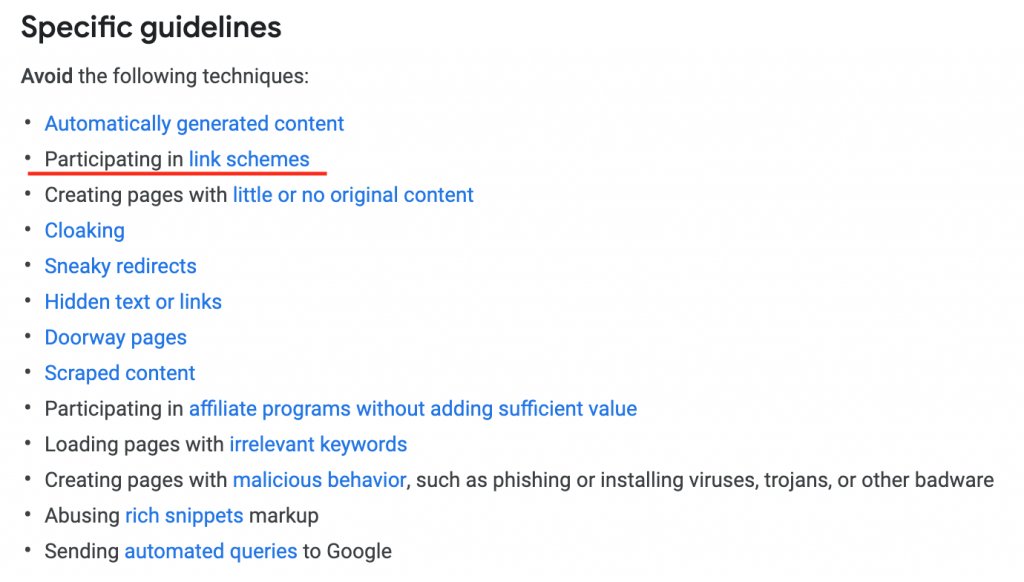
One of the guidelines is the link schemes. 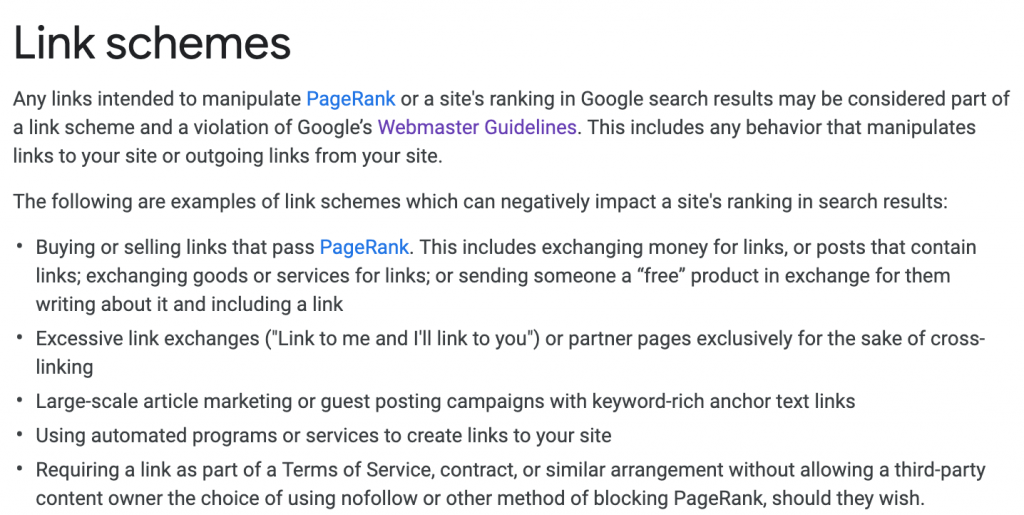
The way I read it (do make your own consideration ;-)) is that asking family and friends is a fine way of starting with link building. If you’re just starting out with your coffee shop or food truck, wouldn’t you want your closests friends and family to know about what you’re doing? And asking them to help out a bit is probably what everyone does.
It’s a bit different if you have a company where 50,000 people work and you ask (or mandate) that every single one of them create a website and link back to the companies site.
There’s a second thing you have to keep in mind. That’s “anchor text”. Anchor text is the blue stuff (normally blue), the clickable part of the link. The most used link text? “Click here”. I think about 5 years ago or so if you Googled “click here” you’d actually see who’d use this anchor text the most because they ranked for it even though they weren’t talking about “how to click here”. If you search for it now you get a lot more relevant results.
Google has become better at understand what a page is about and also what a link is about. It no longer “reads” just the anchor text. It also “reads” what surrounds the link.
So “click here” doesn’t really say much about the website it’s linking to right? You’d rather link to a webpage with a link text that says something about what you can find on the page like: this is a link to how to setup a blog. That’s also where the shoe pinches. Google doesn’t like it if you have a lot of external links pointing to your website with “exact match” anchor texts. Meaning: I wrote a blog about how to setup a blog and I’m going to ask everyone to link to my blog with the anchor text: “How to setup a blog”. That doesn’t look “editorial”. It doesn’t look like a free choice. It looks more like a way to game the system. To increase your rankings artificially by asking people to link to you with a certain anchor text.
When you’re starting out, it doesn’t hurt to ask people to link to your page with the anchor text you prefer. But don’t overdo it. You will get G-slapped.
If you enabled Search console you’ll be able to see what anchor’s are point to what pages. Just click the “links” tab on the left side. A diverse link pattern consists of more than just diverse anchor texts
Everything you need to know about links
- Anchor text
- Proximity & relevance
- Position
- Nofollow vs dofollow
- Link type (text vs image)
- Link age
Anchor texts
We already discussed anchor text a bit. It’s important to have a diverse set of anchor texts point to your blog. You don’t want to have it look artificial. If you have 100 links pointing to your blog with 99 similar anchor texts, that looks strange.
A natural anchor text “palette” would look like this
- urls (example: yannickveys.com)
- source
- found here
- different instances of exact match anchors
Proximity & relevance
Whats been written around the link? Is a link to a housing rental website on a local pizzeria’s website something that would be normal? Is it relevant in the context of the pizzeria? Or does it look like a spammy link?
This is a monster pdf from Stanford research about how links and spam work. Read it. You learn a lot even if you don’t know anything about mathematics.
My key take aways from the Stanford research:
- Good websites (almost) never link to bad websites
- Certain websites have topical knowledge only they have. They can pass a part of their topic trust to other websites
- The more links on a page the less authority you give as an author to other pages
- (My guess) Google has a set of “super” domains that are trusted more than others. They are the mother of trust and can transfer it to other websites.
- The further you are away from the super domains the lower your TrustRank (for example there are 5 links between WhiteHouse.gov and your website)
- 10% – 15% of ALL websites are SPAM. Wow!
- A few links from SPAM pages is still ok. But once you go above a threshold you’re in trouble (you might also be considered a SPAM website)
- There’s no negative SEO. As in: if you deliberately point SPAM links to a competitors site he won’t have any negative impact. There’s a set of pages/websites that if they link out are not counted as a real link.
So you’re better off having a link that’s surrounded by relevant text. It will give you a more diverse ranking palette. So you’ll be able to rank on different keywords because Google sees more than just the link.
SPAMMY sites are more likely to use http as supposed to https (a website with an SSL) certificate. I think this is also something that’s taken into account by Google. Google has been actively communicating that adding an SSL certificate to your website will improve your ranking. So not doing it will at hurt your ranking potential. You’re seen as less professional / authoritative so other websites will think twice before linking to your website. You get hurt twice by not having an SSL certificate.
All my 100+ websites have SSL certificates. There’s another added benefit of having a secure website. (Bit techy this) You’ll be able to transfer files faster via the http2 protocol. Doesn’t matter if you don’t know what it means. The benefit for the user is that your web page is loaded quicker. Users like that 😉 And if your users like it so does Google.
A link in a different position gives different PageRank flow
Meaning: links on a link page pass less “linkjuice” or “PageRank” as a link in content. A link in the footer of a page is not as frequently accessed as a link in the main content of the page.
Google’s “Spider” crawls all websites and looks at every website just like a user does. So they can see “where” on the page the links are. Based on the “Random Surfer model” it’s less likely that you’ll click on a footer link than it is on a link in the body of the page. The same model is used to determine if y random surfers go to x random webpages where would they go? Google could calculate this based on the entire (link) web of the web. How likely it would be that someone went to website x instead of z.
If you only have links pointing to you that are in the footer or on link pages that doesn’t really look normal. A normal link profile consists mostly of links “in content”. It’s believed that Google also looks at how certain websites in certain verticals compare. So they can see the difference in where links are positioned between the sporting niche and the vacation niche. Based on the comparison they can determine what is a normal link profile and what is not.
It’s my personal opinion that homepage links used to be very effective but have significantly been devalued by Google. Your homepage should have the highest PageRank. Most links are pointing to your homepage so that makes a lot of sense. But does it make a lot of sense to point people to a different house when they only touched your doormat? Euh, I don’t think so. This has been (and still is) a tactic that is widely used by spammers because they know that the homepage is the most valuable piece of SEO real estate. I think Google has figured this out and dampened the impact a homepage link as.
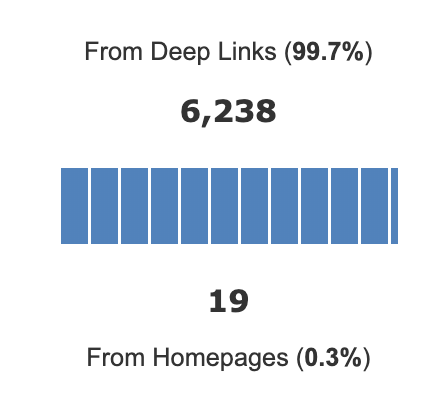
Nofollow vs dofollow links
Nofollow links have been designed by Google to separate them from editorial links. If you add rel=nofollow to a link you’re telling search engines: this is a not a natural, editorial link. Nofollow links don’t pass PageRank. It does allow Google to visit your page. So it will follow your link, but it won’t give you extra authority for it.
So you’d like as much dofollow links as you can get your hands on. But having only dofollow links on the other hand is not natural. It can give a signal to Google that you’re not getting your links from the editorial route but from only requesting links. Not based on value.
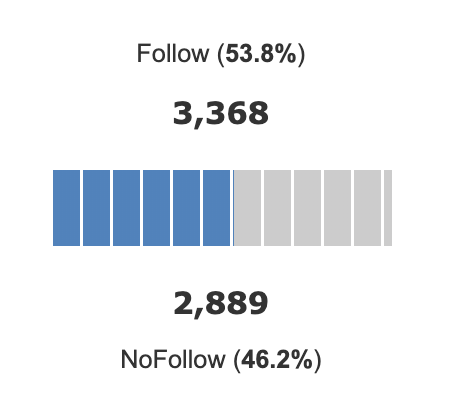
This is from one of my websites. About 50/50. Number of nofollow links is a bit high I guess, but I’m not actively linkbuilding for that website and don’t really know where all the links are popping up. This website has recently been mentioned on TheGuardian and other big news websites. When something like that happens you usually get a big “fallout” of other people linking to you because they see your website on a trusted source.
So if you’re actively linkbuilding, look at your nofollow vs dofollow links. It’s pretty normal for a company to be answering questions on other peoples websites. Having social media profiles. Buying advertorials. All these type of places will (should) add the nofollow tag to your link. That’s not a bad thing. I think it shows Google that you’re a normal company. That has more than just its website. That your reaching out and are behaving like a normal company.
Link age
The longer a link is (a)live, the more trust it’s supposed to have. The more trust the more linkjuice. Commercial links (as in paid links) are usually paid for per year. So if a link disappears all out of a sudden that’s not a very good signal. In content links should stay relevant.
If the link is getting older, so is the page it’s on. That means the page it’s on can collect more and more links which in return will send more linkjuice your way. Same for the domain of course. The longer a website is online the more PageRank it should gain. It will pass a small percentage of its gain to your link.
This information about what a link is is great and all, but I NEED LINKS! NOW!!
OK I hear you 🙂
That’s for my next blog post. Should be done tomorrow or the day after. I’ll update this post then.
Here is the linkbuilding guide.
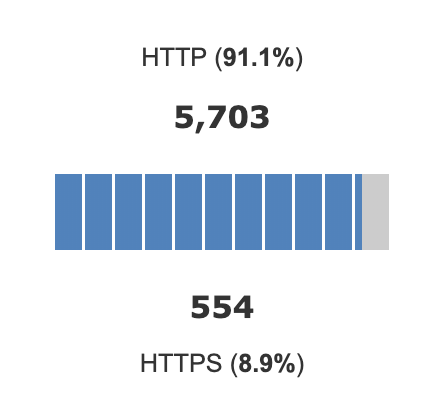
I have no words to express my thoughts about the post. It is super amazing and I wanna thanks you for sharing such a wonderful thing with us!!
You’re very welcome!